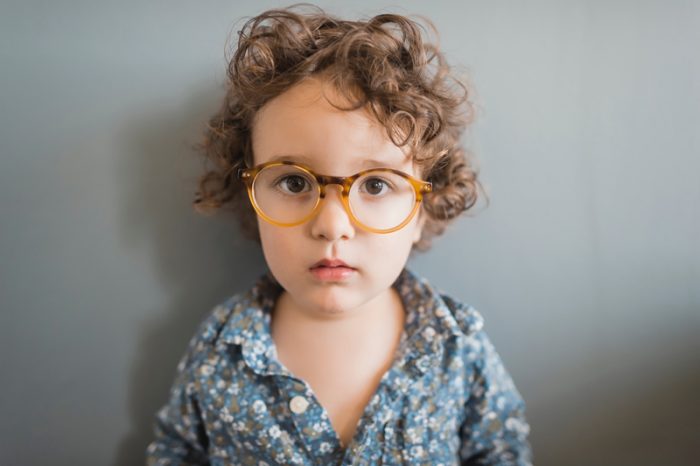Children who exhibit behaviors associated with both ADHD and anxiety may appear similar, but the approach to treatment can differ. Therefore, it is crucial to differentiate between anxiety and ADHD in children.
When I was a psychotherapist working in a school-based setting, I frequently encounter teachers and parents who inquire about the underlying issues with children. They often ask whether the behavior in question was ADHD or anxiety, and how they could address the specific problematic behaviors.
These behaviors were wide-ranging, such as low frustration tolerance, frequent tantrums, constant talking, excessive fidgeting, leaving the classroom, running in the halls, avoiding school work, spending excessive time in the bathroom, struggling to wake up in the morning, and facing difficulties getting ready for school. Other behaviors were more emotional in nature, including appearing disengaged, showing anger, moodiness, and hostility towards peers, defiance towards authority, constant worrying, and more.
These symptoms can be distressing for both parents and teachers, as well as for the child themselves. Seeking assistance is the first step towards better understanding and supporting a child in need. However, accurately diagnosing and treating the underlying cause, whether it’s ADHD or anxiety, is crucial for getting on the right path towards health.
Does My Child Have ADHD?
Adults, including parents, teachers, and therapists, often have a tendency to hastily assume that a child has ADHD or ADD. This inclination to label a child as having ADHD may lead us to overlook the impact of anxiety, often stemming from trauma on children. Our society tends to favor the diagnosis of ADHD because there are established medications available to “treat” it. Wouldn’t it be convenient and fantastic if a magical pill, like a stimulant, could solve all of our child’s problems and eliminate their disruptive behaviors? While medication can be beneficial for some children, based on my professional experience, it is unlikely that ADHD medication alone can completely resolve all of the symptoms.
It’s important to note that while medication can play a role in managing ADHD symptoms, it is essential to consider a comprehensive approach that includes various strategies and interventions. Understanding the potential influence of trauma and addressing it appropriately is crucial for a holistic understanding of a child’s behavior and well-being. By taking into account the broader context and employing a range of therapeutic techniques, we can provide comprehensive support for children’s emotional and behavioral challenges.
Identify Traumatic Events
Not all disruptive behavior in children can be attributed to ADHD. It’s important to recognize that these symptoms may be trauma-related, even if the caregivers are unaware of the child’s experiences that may have triggered such symptoms. This lack of awareness underscores the significance of conducting a thorough assessment to identify the root causes and gain a comprehensive understanding of the child’s situation.
While we often associate trauma with major events such as the death of a parent, sexual assault, or community violence, it’s crucial to acknowledge that life adjustments or seemingly ordinary events can also have a traumatic impact on children. These can include getting lost at an amusement park, watching a scary movie, being plagued by recurring nightmares, transitioning to a new school or home, parents divorcing, or the loss of a beloved pet.
Whether a child is grappling with ADHD symptoms, anxiety stemming from a traumatic experience, or symptoms related to a life adjustment, seeking help is a crucial initial step. All children’s behaviors, whether positive or negative, serve as a means of communication. By creating a safe space for inquiry, both children and families can begin to make sense of what is happening and determine the best ways to manage, adapt, and support a child who is struggling. The more we understand the complexities of trauma in children and the nuances of an accurate ADHD diagnosis, the better equipped we are to support children as they learn, grow, and play.
Alternative Therapy For ADHD in Children
Are you a parent that would like alternatives to medication?
Various alternatives to medication can be effective in managing ADHD symptoms. Psychotherapy, most commonly cognitive-behavioral therapy (CBT) is a common approach, though not always the starting place for ADHD in children. It can help individuals develop coping strategies for ADHD symptoms and improve self-esteem. Neurofeedback, a type of biofeedback, is another technique that teaches individuals to alter brain activity through training, thereby improving concentration and reducing impulsivity.
Behavioral techniques, recommended especially for children under six years old, are often used as a first-line treatment. As children grow older, these techniques can be combined with medication or other therapies.
Exercise can be highly beneficial, helping to boost attention and improve executive functions like planning and prioritizing. Spending time outdoors can also be helpful, providing a break from voluntary attention and aiding focus.
Dietary changes and supplementation, like omega supplements, can be advantageous for those with low omega fatty acids levels. Some research suggests that these supplements can improve ADHD symptoms. Elimination diets, which involve identifying food sensitivities and removing specific foods, may also alleviate symptoms.
Mindfulness practices, such as meditation, promote being present in the moment, reducing negative feelings, and anxiety. This can help individuals with ADHD manage impulsivity and restlessness. There are some great guided meditations for children with ADHD.
Nevertheless, it’s important to consult with a healthcare professional before starting any alternative treatments and to understand that these approaches often work best as complements to traditional treatments. The effectiveness of non-pharmaceutical therapies can vary greatly due to the diverse nature of ADHD symptoms and severity[1][2].
What Is CBT?
Cognitive Behavioral Therapy is an evidence based approach to talk therapy that works well with children and teens. Developed by Aaron Beck and used for decades to effectively treat ADHD, anxiety, depression and more.
Cognitive Behavioral Therapy (CBT) for ADHD involves various techniques aimed at transforming negative thought and behavior patterns into more positive and constructive ones.
For children with ADHD, CBT helps teach organization techniques, manage emotions and anxiety, and breaks down tasks into smaller, more manageable steps. For adults, while medication may enhance attention, CBT helps individuals direct their focus effectively and develop better organizational skills.
Common CBT techniques include setting goals, developing specific objectives, and using techniques like exposure therapy and guided discovery[3]. Additionally, at-home CBT exercises are often recommended to aid in self-regulation.
While CBT can be used alone, it is often combined with medication to manage ADHD symptoms effectively, offering both immediate symptom relief and long-term improvements.




